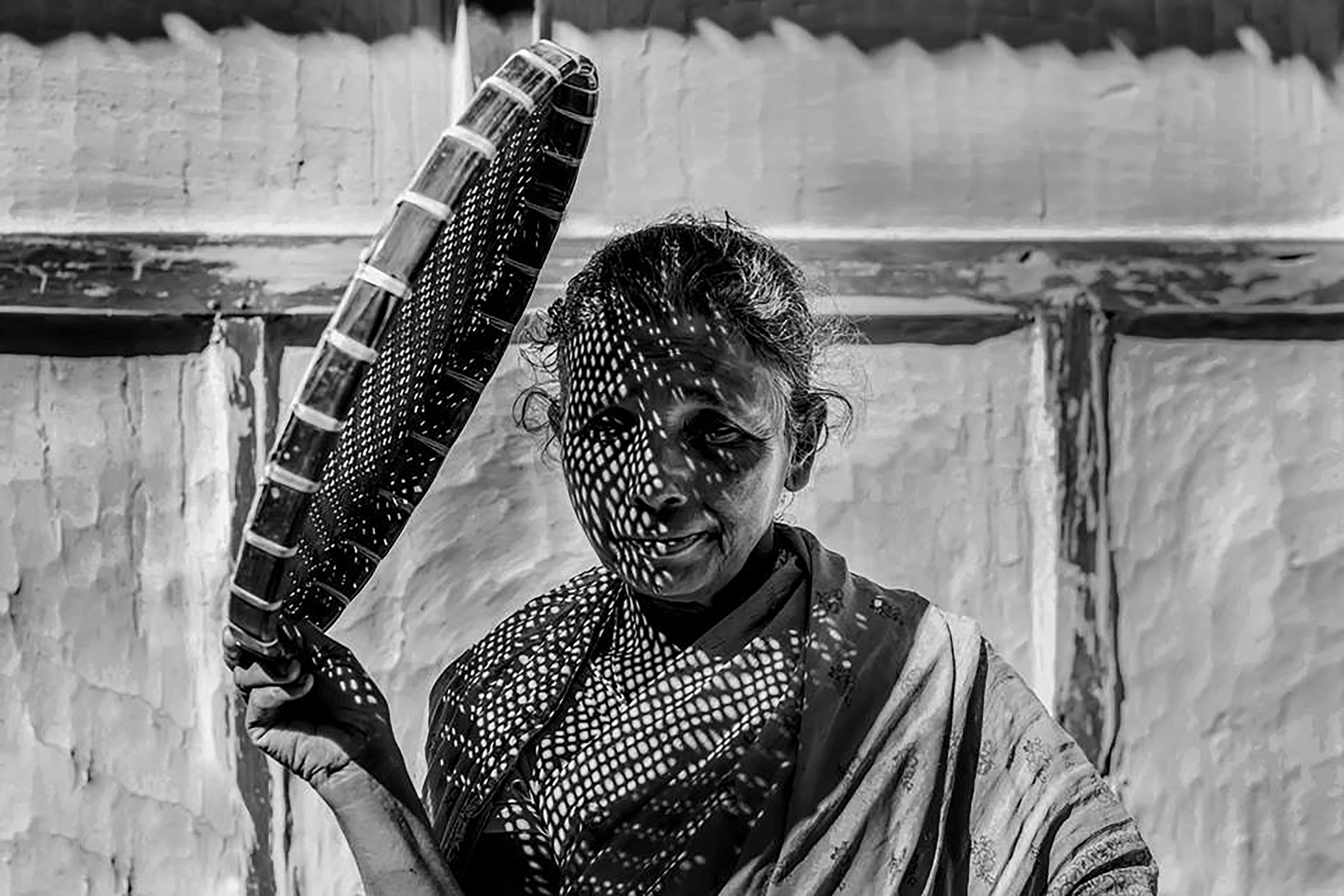Have you ever looked at a photograph and felt like it was talking to you? That’s the power of narrative photography! It’s an incredible form of visual storytelling that captivates your imagination, evokes emotions, and inspires you to take action.
In a world where we’re constantly bombarded with images, narrative photography stands out as a way to connect on a deeper level. Every narrative image is a captivating storybook that you can immerse yourself in. It’s like reading a book with your eyes.
So, if you want to learn how to use narrative photography to tell your own stories and create an impact, keep reading. This article dives deep into narrative photography and is filled with pro tips and creative narrative photography ideas!
What is Narrative Photography?
Imagine looking at a photograph and feeling like you’re a part of it. Like you’re living in that moment, experiencing the same emotions as the subject. That’s what narrative photography is all about.
Narrative photography is the art of weaving stories with images. It’s not just about capturing a beautiful shot but rather about taking the viewer on a journey. A journey through photographs that convey an emotional and thought-provoking message.
Knowing how to tell stories with your images is like having a time machine that you can use to transport viewers to different places, times, and experiences, all while making them feel joy, sadness, anger, or empathy.
Some of the greatest photographers of all time have used narrative photography to tell powerful stories that have influenced how we see the world. For example, the iconic images of the Great Depression captured by Dorothea Lange. These images have the power to move us, inspire us, and make us think. They remind us of our shared humanity, and they connect us to the world around us.

“Migrant Mother” by Dorothea Lange (California, USA – 1936)
5 Narrative Photography Tips
Tip 1: Use composition to tell a story.
Composition is a fundamental element of photography that can be used to tell a story. It’s about where you place the subject in the frame and how you use elements such as lines, shapes, colors, and textures to create a narrative. By carefully arranging these components, you can guide the viewer’s eye and convey a specific message or emotion. Whether using leading lines to draw the viewer’s attention to the subject or the strategic placement of negative space to create a sense of tension or isolation, the composition is a powerful tool for visual storytelling. It allows you to create images that look great and have a deeper meaning and connection to your audience.
Tip 2: Incorporate movement and action to create dynamic images.
Whether it’s freezing the action of a moving subject or intentionally creating motion blur, movement adds energy and excitement to your images. It can also help tell a story by conveying a sense of progress, direction, or momentum. By capturing movement, you can create images that feel alive and evoke emotion in the viewer. The use of movement and action can transform an ordinary scene into a dynamic and captivating photograph that draws the viewer in and keeps them engaged. So, whether you’re shooting sports, wildlife, or street photography, incorporating movement and action into your photographs is a great way to create dynamic and engaging images that capture the viewer’s attention.
Tip 3: Focus on details to reveal the story.
Details are the building blocks of a story, and in photography, they can be the key to revealing a powerful narrative. Focusing on details means paying attention to the small elements that make up a scene, from textures and patterns to colors and shapes. By honing in on these details, you can expose the story that lies beneath the surface. A close-up of a weathered face can reveal a life full of experiences, while a macro shot of a flower can show the intricate beauty of nature. The power of detail lies in its ability to connect the viewer to the subject in a personal and emotional way, allowing them to see the world from a different perspective.
Tip 4: Use light and shadow to enhance the mood.
Light and shadow are powerful tools in photography that can be used to enhance the mood of your images. By manipulating light, you can create a range of emotions in your viewers, from drama and suspense to joy and serenity. The way light falls on a subject can change the entire tone of a photograph, producing depth, texture, and atmosphere. Soft, diffused light can create a feeling of calmness and serenity, while harsh, direct light can create a feeling of drama and tension. Shadows can also add depth and dimension to your images, creating a sense of mystery and intrigue. By mastering the use of light and shadow, you can shoot photos that are not only visually stunning but also emotionally provocative, connecting your viewers to your subjects on a deeper level.
Tip 5: Experiment with different angles and perspectives.
Photography is all about perspective, and by experimenting with different angles and viewpoints, you can create unique and exciting images that stand out from the crowd by enhancing that storytelling component. For example, shooting from a low angle can create dramatic scenes and powerful characters, while shooting from above can provide a unique bird’s eye view of a scene. Changing your perspective can also help you see familiar objects or scenes in a new and exciting way, revealing details and patterns that may have gone unnoticed before. The key is to think outside the box and be willing to try new things, from lying on the ground to climbing a ladder to shooting through a reflection. By experimenting with different angles and perspectives, you can create images that are visually engaging and dynamic and capture the viewer’s attention in a whole new way.
5 Narrative Photography Ideas
Idea 1: Tell a story with a series of images.
Telling a story with a series of images is probably the easiest way to get started with narrative photography. Instead of trying to say all with one shot, you can use several to convey your message. A photo series can be centered around a specific theme, idea, or subject. The idea is to create a cohesive and compelling story that takes the viewer on a journey, revealing different aspects of the narrative with each image. Whether it’s a series of portraits, wonders of winter, or street scenes, a sequence of images allows you to tell a visual story that captures the viewer’s attention, walks him or her through a story, and leaves a lasting impression.
Idea 2: Capture everyday moments to create a narrative.
Everyday moments are full of beauty and significance, and capturing them through photography is a great way to create a relatable and authentic narrative. By documenting the small moments that make up our lives, from morning routines to family dinners, you can create a visual story that resonates with viewers and highlights everyday beauty. These moments can be captured in a variety of settings and situations, from a busy city street to a quiet afternoon at home. Try approaching each moment with intention and focusing on capturing the details that make it unique and special. By capturing everyday moments, you can also create a narrative that celebrates the beauty of life and reminds viewers of the importance of living in the present moment.
Idea 3: Use juxtaposition to create visual tension.
Juxtaposition is another powerful tool in photography that can be used to tell engaging stories. The juxtaposition creates visual tension and intrigue. By placing two contrasting elements side by side, you can build conflict and contrast that captures the viewer’s attention and sparks their curiosity. This can be achieved through different techniques, such as contrasting colors, textures, shapes, or even subject matter. Just think creatively and experiment with different combinations to create a dynamic and visually engaging image that produces a fascinating narrative through tension.
Idea 4: Use color to enhance the story.
By selecting the right colors and tones, you can create an emotional impact that adds depth and dimension to your images. For example, bright, vibrant colors usually generate energy and excitement, while muted, earthy tones are calmer and more serene. Choose colors that complement the subject and convey the intended message. Ask yourself, do you want to make a bold, dramatic statement or present a subtle, understated view?
Idea 5: Create a mood with black and white photography.
Stripping away the distraction of color allows the viewer to focus on the tonal range and texture of the subject, resulting in an image carrying a unique mood. Yet, this mood is not always the same. Darker black-and-white photos can be used to add tension and mystery. Also, fear, sadness, and mourning. Meanwhile, bright and high-contrast images can create an image that represents innocence, cleanliness, peace, and ideation.
In Conclusion
Narrative photography is more than just a form of visual art. It’s a way of telling stories that can change how we think and feel about the world. It’s an art form that allows you to capture the world around you in a unique and meaningful way and share your perspective with others.
So, give narrative photography a try! Grab your camera and explore your surroundings, looking for moments that capture your attention and tell a story. From rackety scenes on the street to quiet moments at home, there are endless opportunities to create compelling narratives through photography. Just let your creativity run wild and start capturing the world in your own unique way through narrative photography!
Ready to begin your narrative photography journey?
Make sure your visual narratives are safely stored and that all the creative tools your camera provides for storytelling are available for you. Upgrade to ProGrade Digital memory cards to get the most out of your camera and start telling your stories with stunning clarity and detail.





